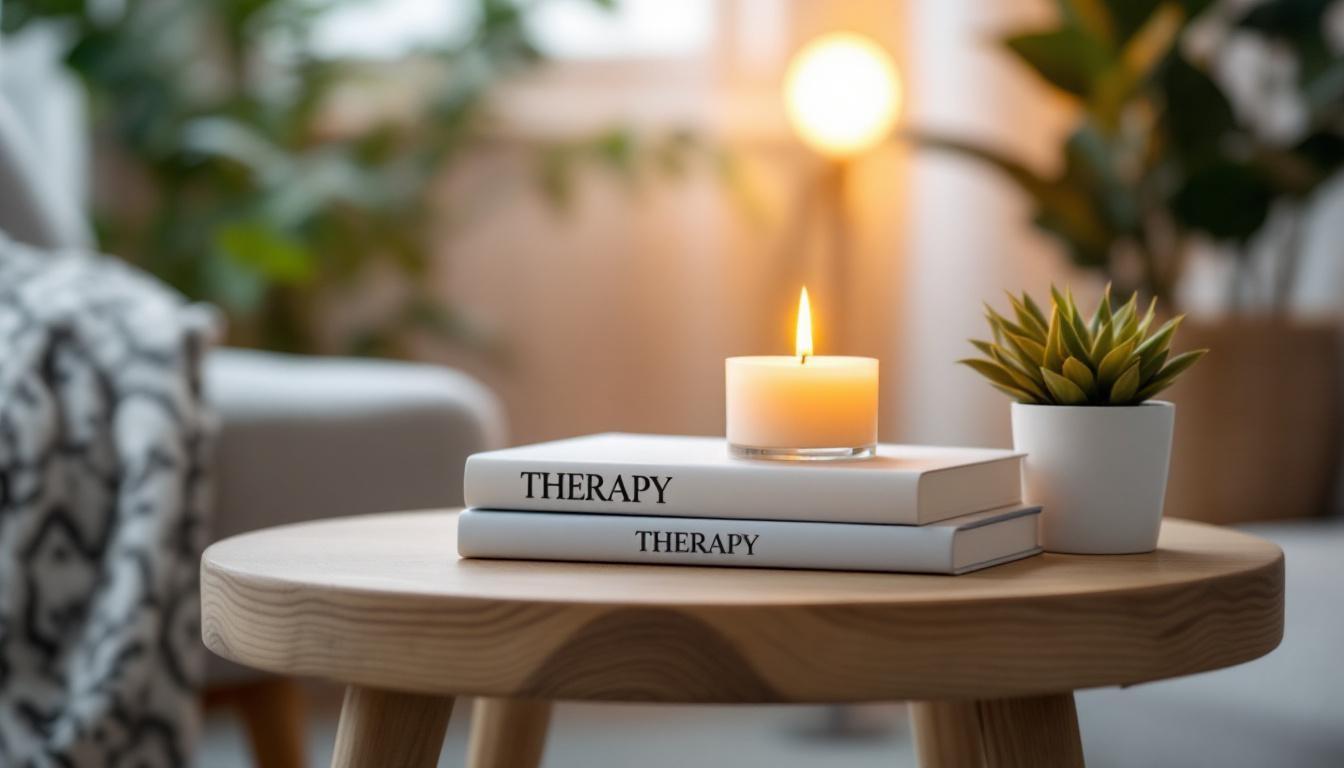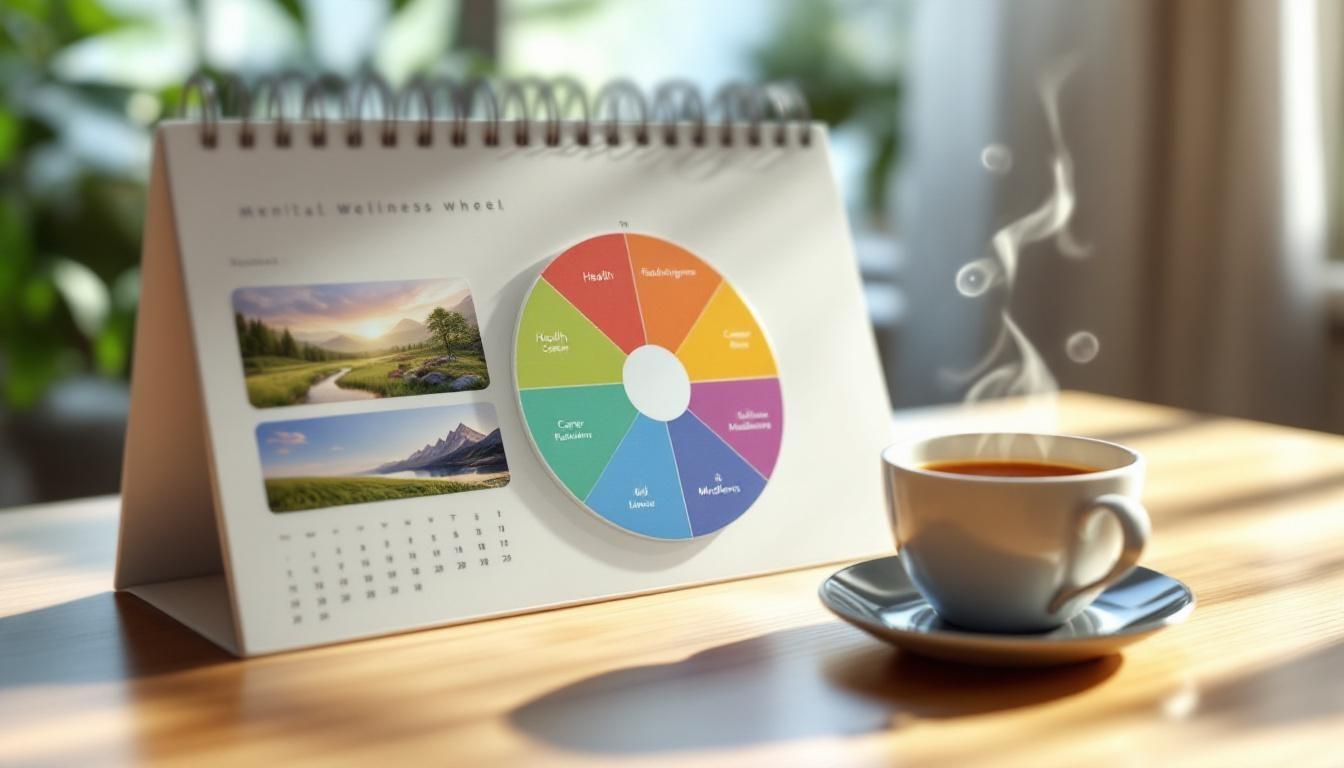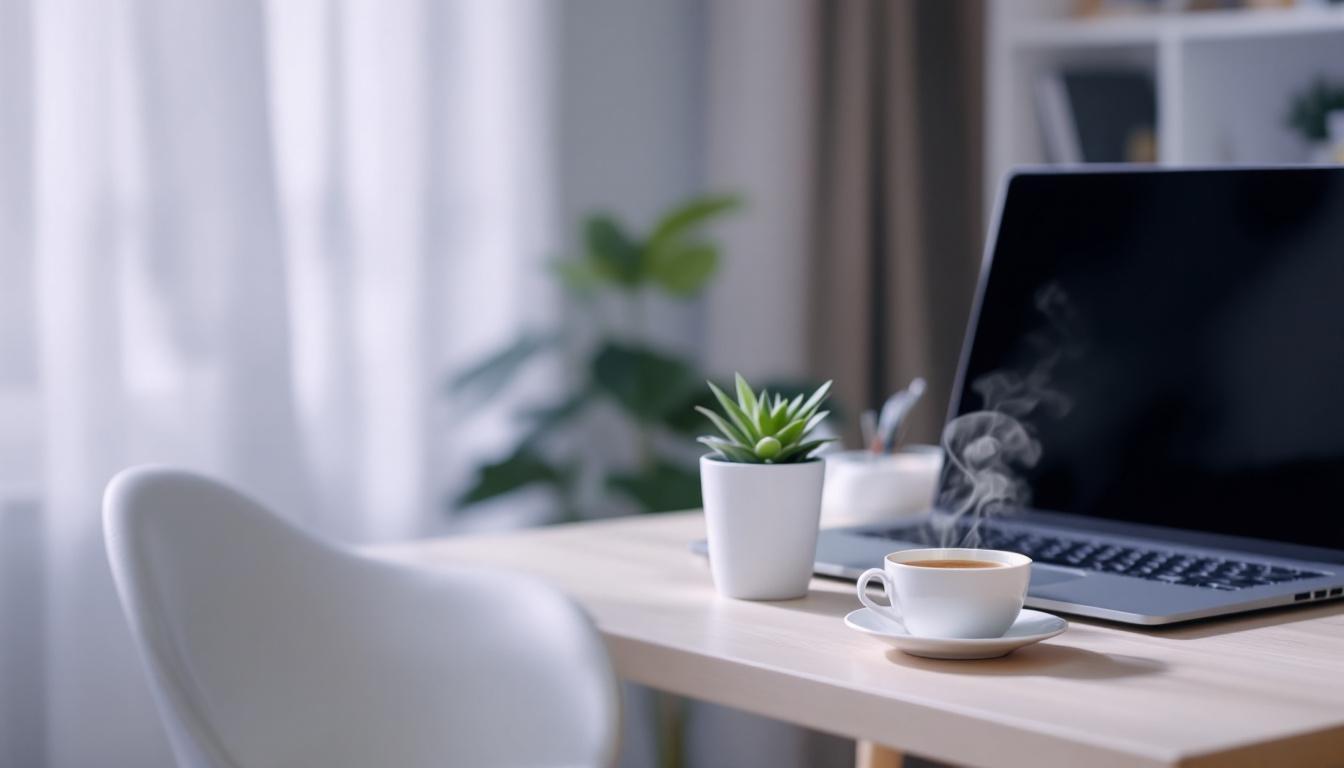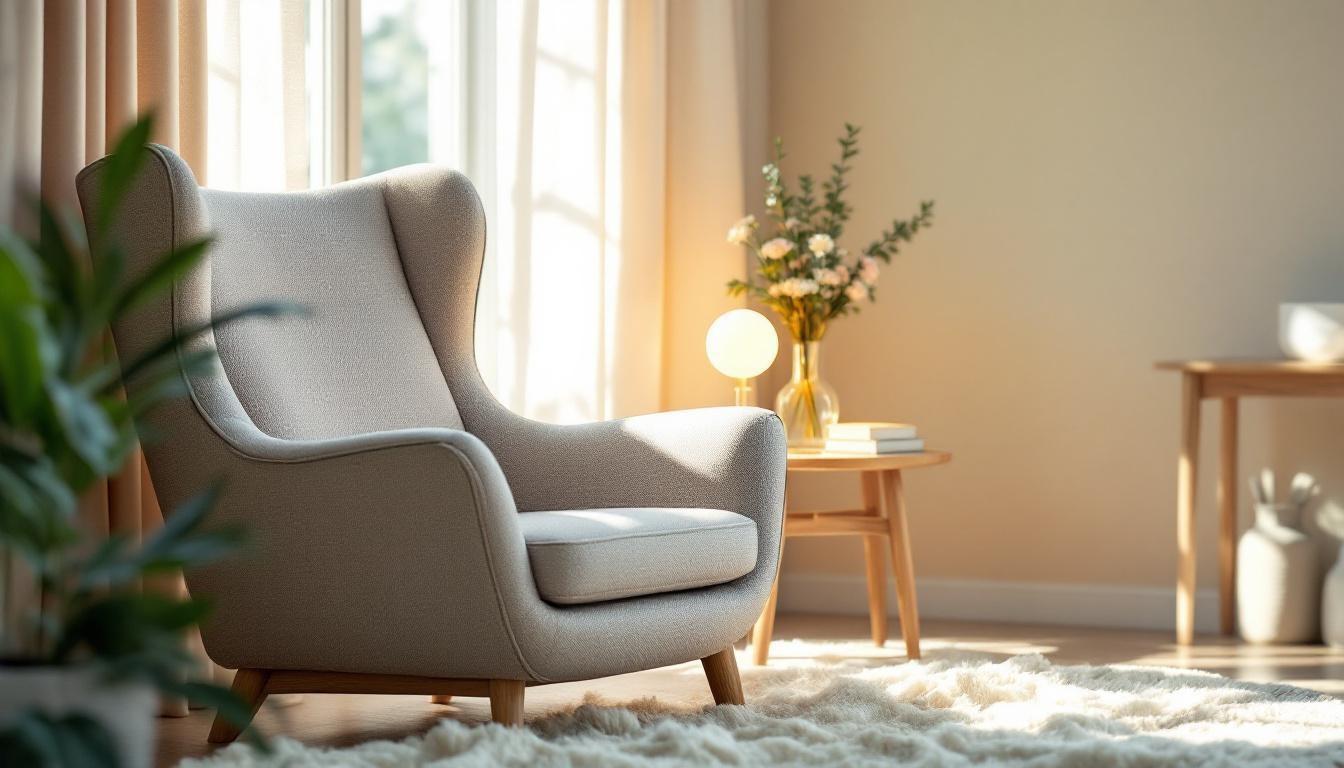Your environment shapes your mental state more than you might realize. Mental wellness posters offer a simple yet powerful way to create daily reminders that support your psychological well-being.
At Devine Interventions, we understand how visual cues can transform spaces into sources of strength and positivity. The right poster placement can shift your mindset and provide comfort during challenging moments.
The Psychology Behind Visual Mental Health Reminders
Your brain processes visual information 60,000 times faster than text, which makes mental wellness posters powerful tools for immediate psychological impact. Research shows that positive visual imagery can influence emotional states, though the specific mechanisms vary based on individual factors and viewing conditions. This rapid visual processing means that strategically placed mental health reminders bypass your conscious filters and directly influence your emotional state throughout the day.
Color Psychology Drives Emotional Response
Research shows that just 10–15 minutes in green space can lower cortisol (your stress hormone), reduce overthinking, and quieten an anxious mind. Mental wellness posters that use these calming colors create immediate physiological changes in your space. Yellow accents boost serotonin production, but you should limit them to 20% of your visual field to avoid overstimulation. The World Health Organization confirms that nature-themed imagery with these therapeutic colors enhances relaxation responses and promotes emotional regulation. Strategic color choices in your mental health displays work as passive mood regulators.
Strategic Placement Programs Your Subconscious Mind
Position mental wellness posters at eye level in spaces where you spend 15 minutes or more daily. The American Journal of Psychiatry found that individuals exposed to positive mental health messages in their peripheral vision showed 18% improvement in self-reported mood scores. Place affirmation posters near mirrors, coffee stations, and computer monitors where your gaze naturally falls. Rotate poster messages every three months to maintain neuroplasticity and prevent habituation (your brain adapts to repeated stimuli).
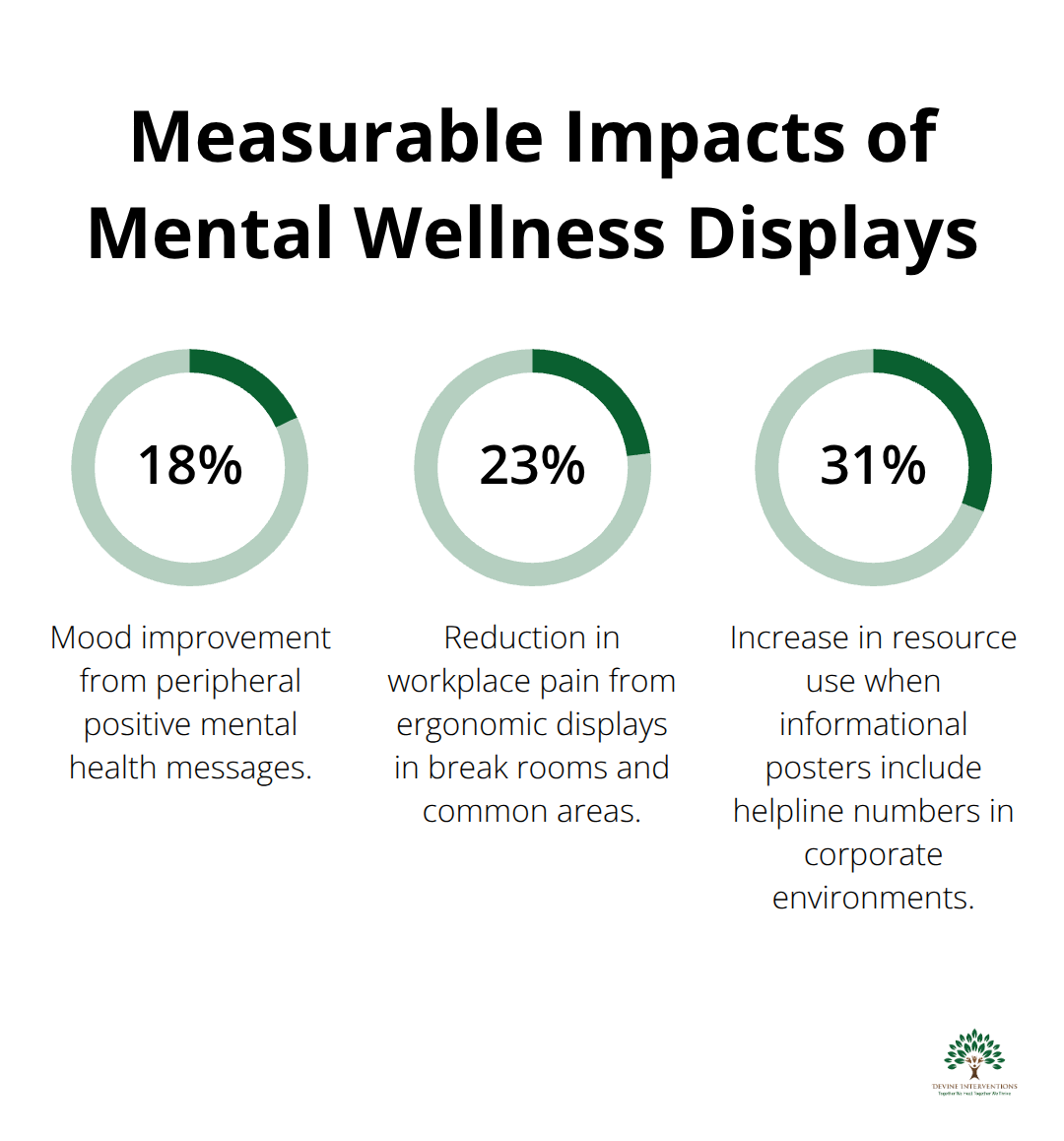
Your subconscious mind absorbs these visual cues even when you’re not actively reading them.
Visual Affirmations Reshape Neural Pathways
Daily exposure to positive mental health messages literally rewires your brain through neuroplasticity. Research from the Greater Good Science Center demonstrates that inspirational quotes on posters foster resilience and create lasting positive mindset changes. The repetitive nature of visual affirmations strengthens neural connections associated with self-worth and emotional stability. This process works best when you combine multiple sensory inputs (visual posters with calming scents or soft textures nearby). Your brain forms stronger memories and emotional associations when multiple senses engage simultaneously.
Now that you understand how visual cues transform your mental state, let’s explore which specific types of mental wellness posters work best for different environments and purposes.
Choosing the Right Mental Wellness Posters for Different Spaces
Your workspace demands different mental health messages than your bedroom or a therapy waiting room. Research from the University of California Berkeley shows that ergonomic workplace displays reduce workplace pain by 23% when you position them in break rooms and common areas. Choose posters with professional language like “Progress Over Perfection” or “Mental Health Breaks Are Productive Breaks” for office environments. Avoid overly personal or emotional messages in professional settings where colleagues might judge vulnerability. The National Institute of Mental Health found that informational posters with helpline numbers increased resource use by 31% in corporate environments.
Office Spaces Need Professional Mental Health Messages
Place mental wellness posters near coffee stations, printers, and elevators where employees naturally pause for 30-60 seconds. Google’s internal wellness program showed that they maintained better engagement when they rotated digital mental health messages every two weeks rather than used static displays. Focus on stress management techniques, boundary setting, and work-life balance themes. Avoid therapy-specific language or crisis messages in open office areas. Instead, use empowering statements about resilience and team support that normalize mental health conversations without creating workplace awkwardness.
Home Environments Allow Deeper Personal Healing
Your personal spaces can handle more intimate mental health messages because you control who sees them. The American Art Therapy Association confirms that bedroom and bathroom mirror placements create the strongest positive self-talk reinforcement. Choose posters with self-compassion themes, body positivity messages, or trauma recovery affirmations for private areas. Living rooms work well for family-focused mental health messages about communication and emotional support. Kitchen placements should focus on mindful eating and stress management (since meal preparation often triggers anxiety for many people).
Healthcare Settings Require Crisis-Informed Visual Support
Therapy offices and medical waiting rooms need mental health posters that acknowledge current struggle while they offer hope. Research suggests that music therapy may be beneficial for improving breathing capacity and relaxation in healthcare environments. Include emergency resource information and local crisis hotline numbers on these displays. Position recovery-focused messages where patients wait longer than 10 minutes, as this timing allows deeper message absorption without patients feeling rushed or overwhelmed by the clinical environment.
Once you select the right posters for each space, the next step involves strategic placement and integration with other wellness elements to maximize their therapeutic impact.
Creating Your Own Mental Wellness Display Strategy
Position your mental wellness posters 57-63 inches from the floor, which aligns with average adult eye level during standing activities. Mount posters on walls that receive natural light between 10 AM and 2 PM, as exposure to light impacts circadian rhythms and energy metabolism. Avoid placing mental health displays directly opposite mirrors or reflective surfaces, which create visual competition and reduce message retention.
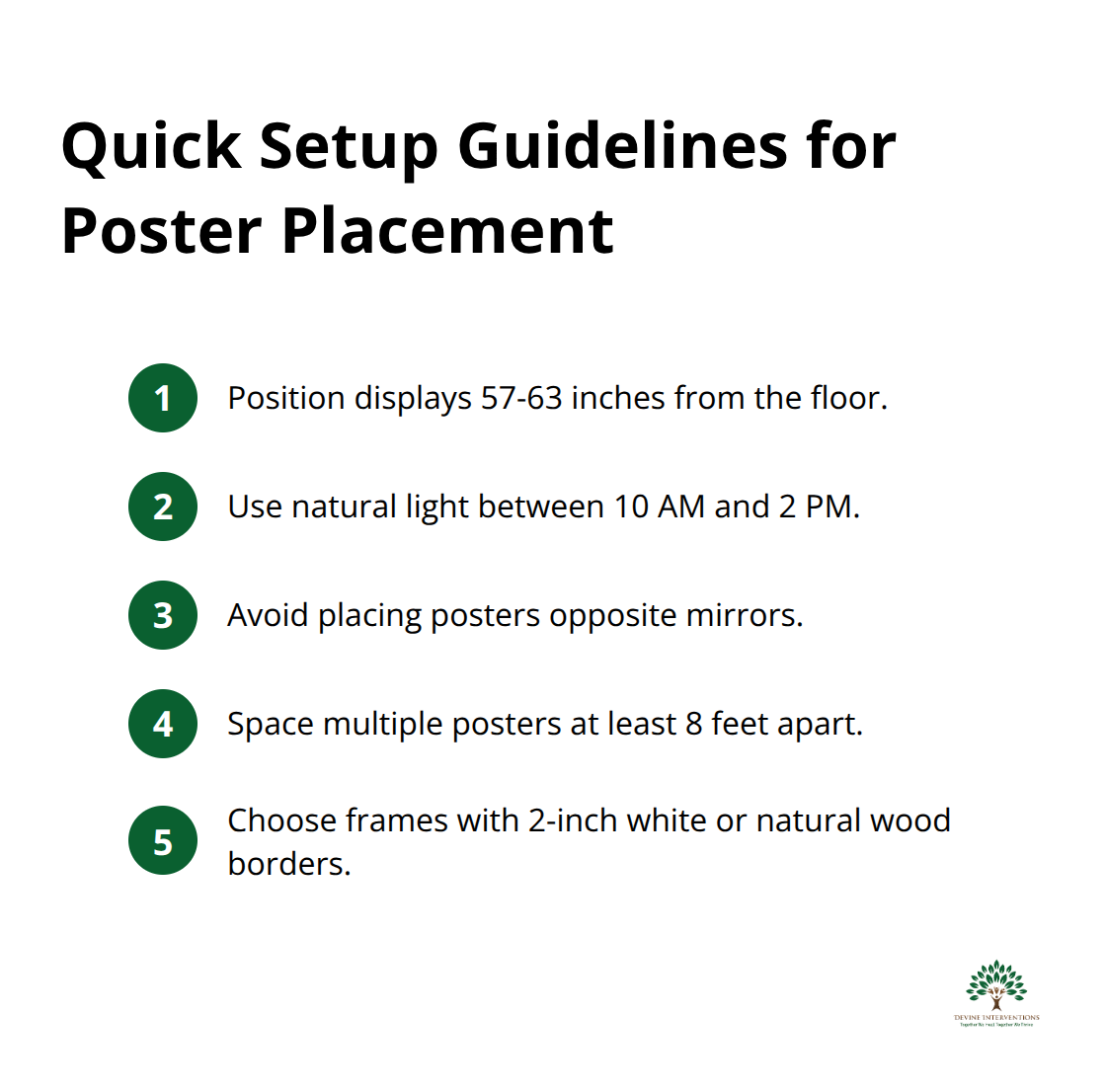
Space Multiple Displays for Maximum Impact
Space multiple posters at least 8 feet apart to prevent cognitive overload. Choose frames with 2-inch white or natural wood borders that create visual breathing room around your mental health messages. This spacing allows your brain to process each message individually rather than competing for attention. Research shows that cluttered visual environments increase cortisol production, which counteracts the calming effects you want from mental wellness displays.
Integrate Wellness Elements for Compound Benefits
Pair your mental wellness posters with live plants like snake plants or pothos, which provide psychological benefits while improving indoor air quality. Position a small essential oil diffuser within 3 feet of your poster display using lavender or eucalyptus scents that may help reduce anxiety symptoms. Add soft lighting through table lamps with warm 2700K bulbs rather than harsh overhead fluorescents, as warm lighting supports improved emotional regulation.
Create Dedicated Wellness Corners
Design a designated wellness corner with a comfortable chair, soft throw blanket, and your mental health posters positioned at seated eye level (48-52 inches) for extended engagement during difficult moments. This creates a physical sanctuary where you can retreat when stress levels rise.
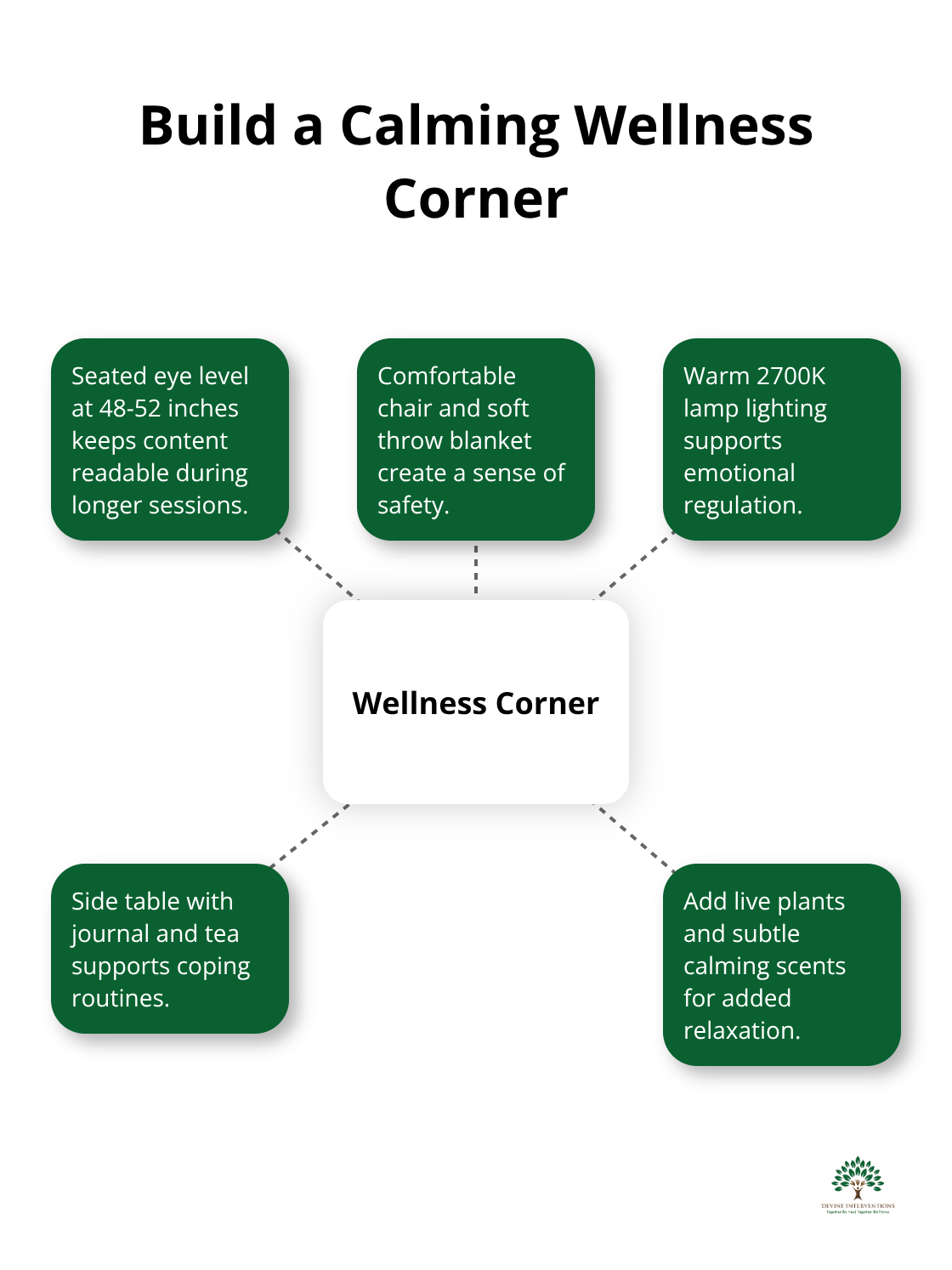
Include a small side table for journals, tea, or other comfort items that support your mental health routine.
Track Your Display Success Through Behavioral Changes
Monitor your stress response by rating anxiety levels from 1-10 before and after spending time in your poster-enhanced space for two weeks. Document sleep quality changes, as mental wellness displays often improve evening routine adherence and bedtime anxiety reduction within 3-4 weeks of consistent exposure. Count how often family members or roommates reference poster messages in conversations, which indicates successful integration into daily mental health awareness. Replace posters showing physical wear or fading after 6 months, as deteriorated displays send subconscious messages about neglecting self-care.
Final Thoughts
Mental wellness posters create measurable changes in your daily emotional state through strategic visual placement. Research confirms that proper positioning and color psychology reduce stress hormones while they build resilience through repeated positive messages. Your brain processes these visual cues 60,000 times faster than text, which makes poster displays powerful tools for immediate mood regulation.
Transform your space today when you position mental wellness posters at eye level in high-traffic areas where you spend 15+ minutes daily. Combine them with natural light, plants, and calming scents for compound therapeutic benefits. Track your progress through mood ratings and sleep quality improvements over 2-4 weeks (most people notice changes within this timeframe).
Visual reminders support your mental health journey, but they work best alongside professional care. We at Devine Interventions provide comprehensive mental health services that address your unique needs with evidence-based treatment approaches. Contact us today to begin your personalized path toward lasting mental wellness and recovery.



